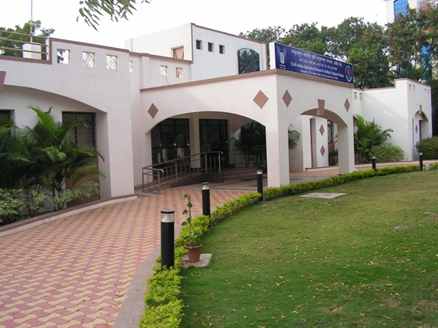भा.कृ.अ.प. - भारतीय कृषि अनुसंधान संस्थान | ICAR-Indian Agricultural Research Institute
| हिन्दी | || || |
भा.कृ.अ.प. - भारतीय कृषि अनुसंधान संस्थान | ICAR-Indian Agricultural Research Institute
| हिन्दी | || || |

Pioneer institute of India on plant virus diseases established in 1938 (as Plant Virus Research Laboratory) by Imperial Council of Agricultural Research, British India; the objective being coordinating all research works on virus diseases of plants of this region and the country. Considering its national importance, the station was transferred to Indian Agricultural Research Institute (IARI), New Delhi on 1 April, 1956 and renamed as IARI Regional Station, Pune. Office and laboratories of the station were shifted from Shivaji Nagar (Pune) to its 18 acre experimental farm at Aundh (Pune) on 16 February, 2014.
The station is the only one of its kind engaged exclusively in research and extension on virus and virus like diseases of fruits and vegetables. The station has characterized many viral diseases and developed their diagnostic and management practices. Many first reports of virus diseases (at least two dozens of crops) and insect vectors are from this station only, namely, Zucchini yellow mosaic virus, on capsicum (2019), bottle gourd virescence and phyllody (2017), mixed infection of papaya ringspot virus(PRSV) and phytoplasma in papaya (2016), axillary shoot proliferation phytoplasma disease in papaya (2014), Zucchini yellow mosaic virus on zucchini, bottle gourd, muskmelon and cucumber (2003-2006), Watermelon bud necrosis caused by Tospovirus in muskmelon (2004), Pepper veinal mottle virus and Tobacco etch virus in capsicum (2004), Yellow mid-vein of citrus in Kagzi lime (1981), Mosaic disease of Sawa (Panicumcrusgalli) and Rhopalosiphummaidis and Myzuspersicae as vectors (1977), Little leaf syndrome in Justiciajendarussa(1976), Exocortis disease of citrus (1975), small leaf stenosis disease (caused by MLO) of cotton (1972), mosaic disease on yam and Panicumcrusgalli) and Rhopalosiphummaidis and Myzuspersicae and Aphis gossypi as vectors (1969), Chlorosis disease of sorghum and delphacid (Peregrinusmaidis) as its vector (1968), Citrus psyllid, Diaphorniaas a vector of Citrus Greening (1967), Broken stripe disease in corn and its leaf hopper vector (1966), Yellow mosaic disease of wild jute (1966), Mosaic disease of finger millet and its seven aphid-vector species (1965), Stripe disease of maize (1965), Little leaf of brinjal on Datura fastuosaandCatharanthusroseus(1965), Elettaria cardamom and Amomumspeciesasadditional hosts for foorkey disease of large cardamom (1964), Mosaic disease of southern sunhemp (1962), Chilli leaf curl disease in brinjal and tomato (1959), Pentalonianigronervosa as vector of ‘katte’ disease of small cardamom (1958), Yellow vein mosaic of okra: whitefly as vector and Hibiscus tetraphyllus as collateral host (1950), Sugarcane grassy shoot disease caused by MLO: aphids as vector and sorghum as an additional host (1949), PRSV disease (1947-48), chilli mosaic disease (1940) etc.
